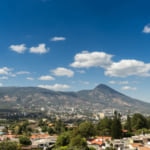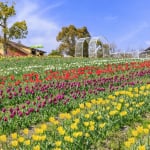Name: Resort Shirakami
Official Website URL: https://www.jreast.co.jp/akita/gonosen/
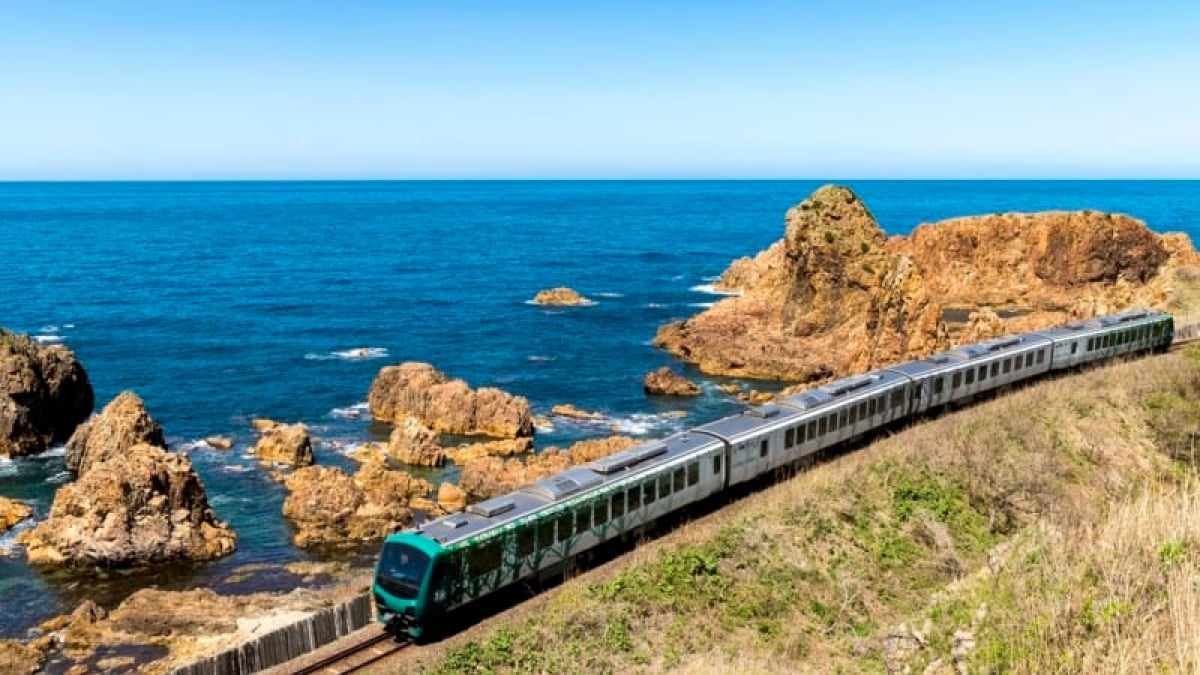
JR Gono Line “Resort Shirakami” guided by a repeat traveler: seat reservations & sightseeing spots
The JR East "Resort Shirakami" train is a popular sightseeing train that allows passengers to enjoy a scenic rail journey along the picturesque coastline of the Sea of Japan. It began operating on the Ou Main Line and Gono Line in April 1997. Why not take a ride on the Resort Shirakami and fully enjoy a train trip while admiring the coastal scenery?
This time, we introduce the stations along the Gono Line that are highly rated by tourists, along with must-visit sightseeing spots. Additionally, we provide details on how to reserve seats on the Resort Shirakami, recommended seating options, and how to access the boarding stations.
table of contents
[x] close
JR Gono Line “Resort Shirakami” guided by a repeat traveler: seat reservations & sightseeing spots
- 1. Reasons to travel on the JR Gono Line with "Resort Shirakami"
- 2. The appeal of the Resort Shirakami Train
- 3. The three train variants: "Buna," "Aoike," and "Kumagera"
- 4. How to reserve "Resort Shirakami" & recommended seats
- 5. How to transfer to the Resort Shirakami train from the Shinkansen or airplane
- 6. Highlights and recommended sightseeing spots around the major stations
- ① Hirosaki Station
- ② Kawabe Station
- ③ Goshogawara Station
- ④ Kizukuri Station
- ⑤ Ajigasawa Station
- ⑥ Senjojiki Station
- ⑦ WESPA Tsubakiyama Station
- ⑧ Juniko Station
- ⑨ Higashi-Noshiro Station
- ◎ Set Out on a Journey with the Resort Shirakami!
1. Reasons to travel on the JR Gono Line with "Resort Shirakami"
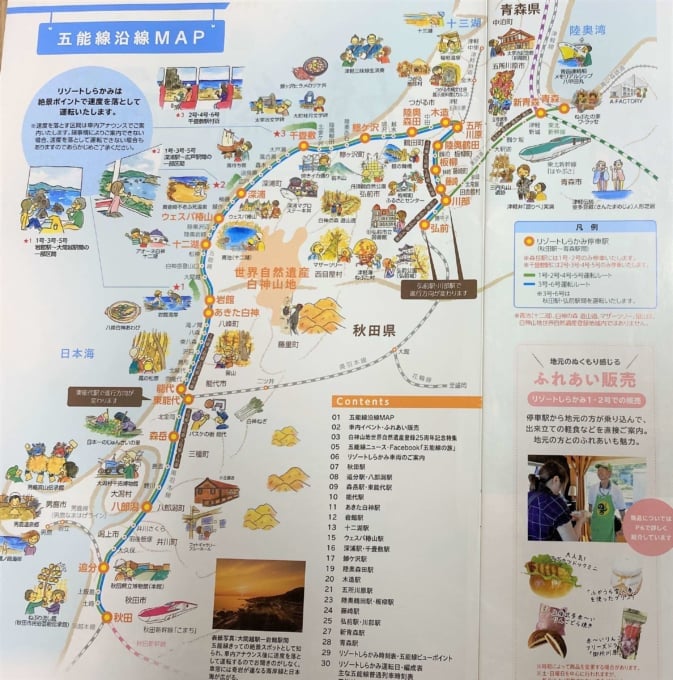
The Gono Line is a local railway stretching approximately 150 km and consisting of 43 stations, connecting "Kawabe" Station in Inakadate Village, Minamitsugaru District, Aomori Prefecture, to "Higashi-Noshiro" Station in Noshiro City, Akita Prefecture. The Resort Shirakami train runs along the Gono Line between JR Aomori Station and Akita Station, making it a dream resort train where passengers can enjoy both breathtaking railway journeys and hot springs.

Through the train windows, passengers can admire Mount Iwaki, standing at 1,625 meters and known as "Tsugaru Fuji," as well as the stunning coastal scenery of the Sea of Japan. The Gono Line is gaining attention as a must-ride railway, especially aboard the Resort Shirakami!
2. The appeal of the Resort Shirakami Train
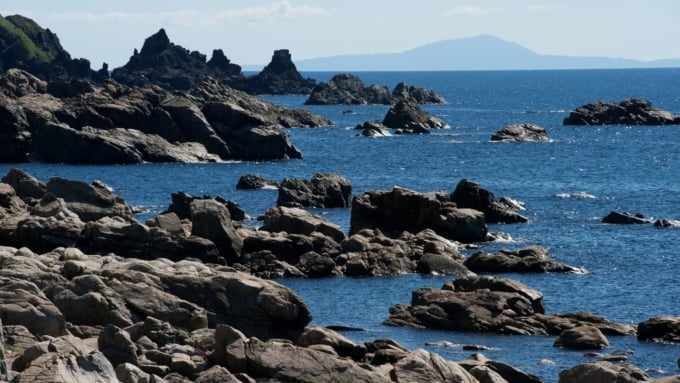
The Resort Shirakami train offers a spectacular view of the Sea of Japan, especially in areas like Ōmagoshi. Here are some of its unique features:
① Sightseeing Stop at Senjojiki Coast (Only on Trains No. 2–5)
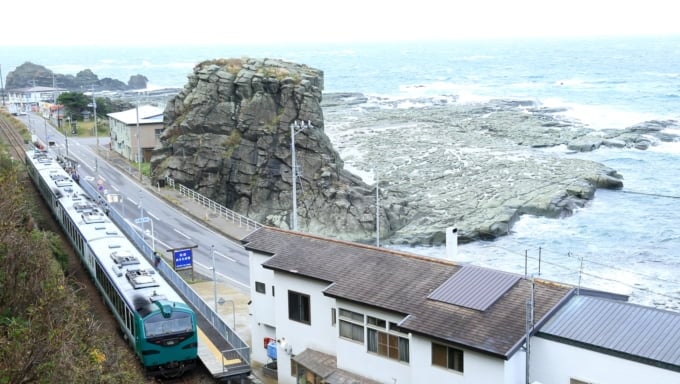
At Senjojiki Station, passengers can step off the train and explore the vast Senjojiki Coast, rather than just viewing it through the windows. Trains No. 2 to 5 make a special sightseeing stop at Senjojiki Station for approximately 15 minutes. During this time, visitors can walk across the wide rock formations and get close to the shoreline. There’s also plenty of time for taking photos, but make sure to return to the train on time!
Note:
Only Trains No. 2 to 5 stop at Senjojiki Station for sightseeing. Trains No. 1 and 6 pass through without stopping.
If there are strong winds or train delays, the sightseeing stop may be skipped.
② Guided Announcements & Slow-Speed Passes for Scenic Spots
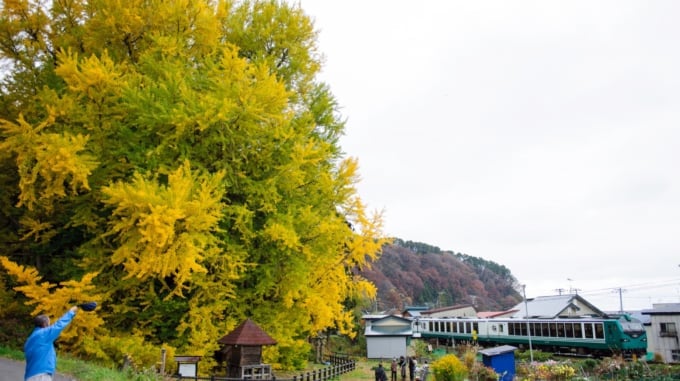
The train provides guided announcements about notable spots, such as the Great Ginkgo Tree and Ōmagoshi, giving passengers insights into the scenic highlights. Although the train does not stop at these locations, it slows down to allow for perfect photo opportunities.
③ Switchbacks

A unique experience on the Resort Shirakami is its three switchbacks, which occur at Hirosaki Station, Kawabe Station, and Higashi-Noshiro Station. The change in direction adds an extra layer of fun to the journey!
④ Onboard Live Performances
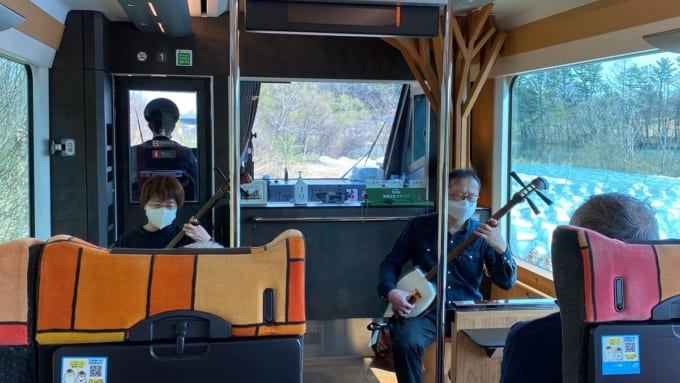
Live performances take place inside the train. Between Ajigasawa and Goshogawara stations, passengers can enjoy live performances of Tsugaru folk songs such as the Tsugaru Jongara Bushi, played on the Tsugaru shamisen. Additionally, depending on the schedule and train, other performances include storytelling in the Tsugaru dialect (Kataribe) and the Kinta Dazoku Puppet Show.
For those not in the designated performance car, the live event is broadcast on monitors throughout the train. As a repeat traveler, I hope for improvements in the angle and volume of these broadcasts for a better experience!
Note: Check the official website for details on performances, dates, and locations.
3. The three train variants: "Buna," "Aoike," and "Kumagera"
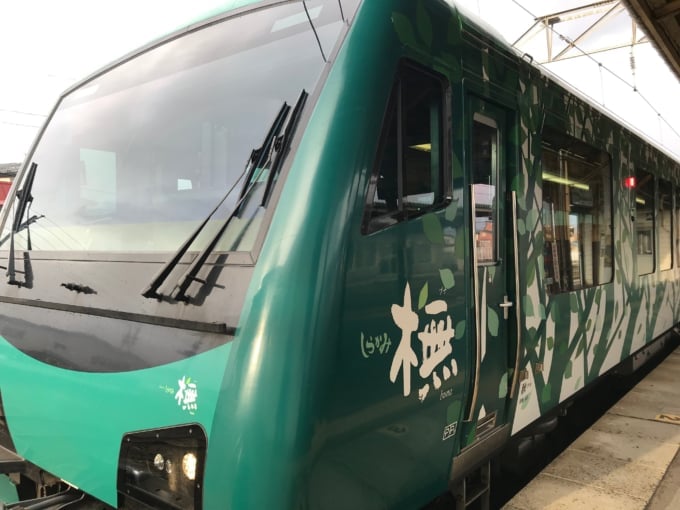
The Resort Shirakami train consists of three different train formations, often referred to as the "three brothers."
The newest model, "Buna" (Beech Tree), has been in operation since July 2016. This hybrid train features a design inspired by beech trees, with a bright wooden and orange-themed interior.
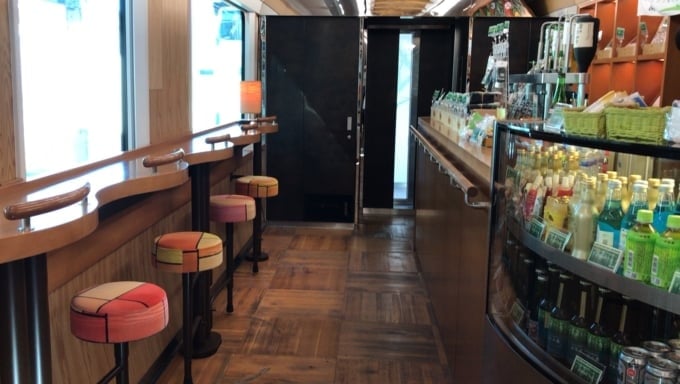
One of Buna's standout features is the "ORAHO" shop in Car 3. Passengers can sit at the counter by the window while enjoying bento boxes, local craft beer, and specialties from the Gono Line, all while admiring the passing scenery.
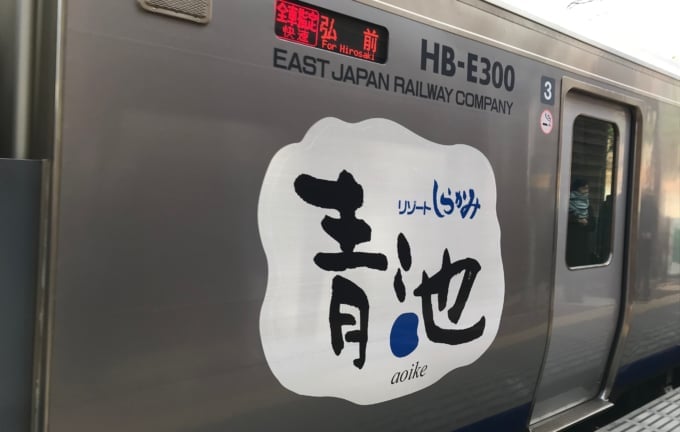
The "Aoike" (Blue Pond) train has a blue and gray-themed design and, like Buna, is an eco-friendly hybrid train.
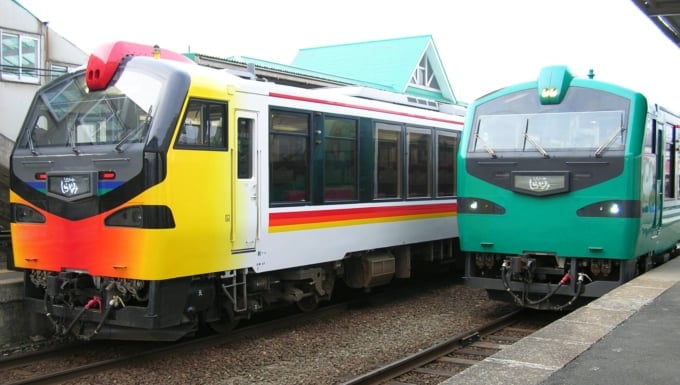
The "Kumagera" (Black Woodpecker) train features an orange exterior inspired by the sunset along the Gono Line and the black woodpecker, a bird native to the Shirakami-Sanchi area.
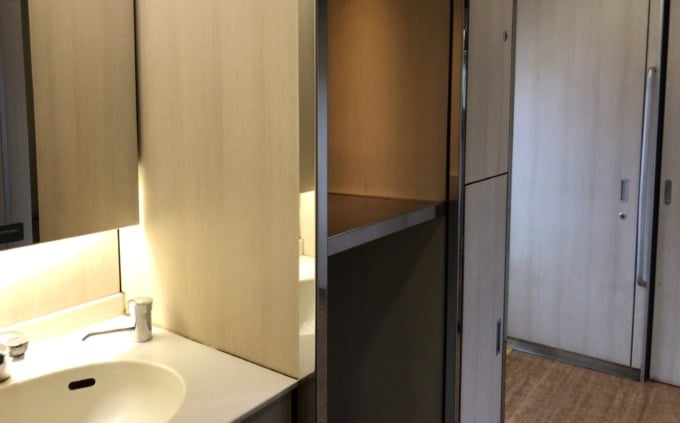
As expected from a resort train, the seats are spacious, and facilities such as restrooms are well-maintained! Try to ride all three Resort Shirakami trains and complete the set!
4. How to reserve "Resort Shirakami" & recommended seats
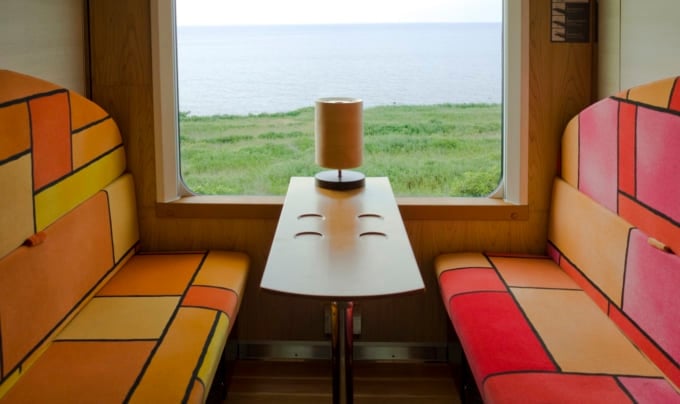
Since all seats on the Resort Shirakami train are reserved, passengers need both a train ticket and a reserved seat ticket. Be sure to purchase them in advance through ticket vending machines, the Midori-no-Madoguchi ticket counters, or JR East's online reservation system, "Eki-net."
All three Resort Shirakami train variants have four-car formations, with Car 2 being particularly unique. Car 2 consists entirely of box-style seats, making it perfect for families and groups looking for a private and relaxing space!
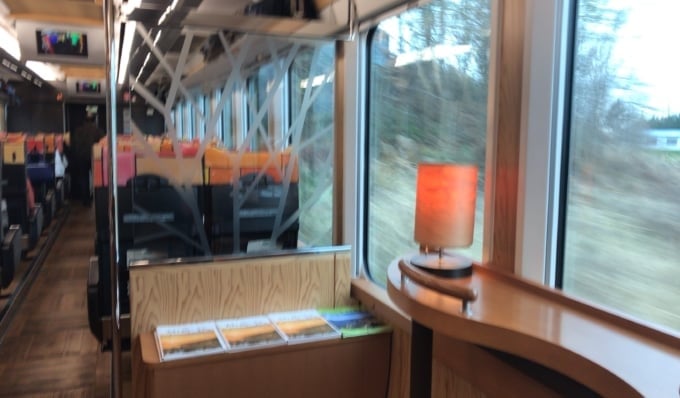
Cars 1, 3, and 4 are standard reserved-seat cars with two-seat rows on either side of the aisle. The best seats are the window-side A seats, offering a stunning view of the Sea of Japan coastline! These seats are highly competitive, so try to secure one early. However, even if you can’t get an A seat, don’t worry. Passengers are free to move around the train, allowing you to enjoy the scenic views and take photos from various vantage points.
5. How to transfer to the Resort Shirakami train from the Shinkansen or airplane
The Resort Shirakami train operates between Aomori Station and Akita Station. Here are the main ways to access the train via the Shinkansen or by air.
◆ Shinkansen
【Tohoku Shinkansen】Shin-Aomori Station
If traveling on the Tohoku Shinkansen, you can board the Resort Shirakami train at Shin-Aomori Station after it departs from Aomori Station.
【Akita Shinkansen】Akita Station
Since the Akita Shinkansen and conventional lines share the same station at Akita, passengers can board the Resort Shirakami directly from Akita Station.
◆ Airplane
【Aomori Airport】Aomori Station
A limousine bus connects Aomori Airport to JR Aomori Station in approximately 35 minutes.
【Akita Airport】Akita Station
A limousine bus takes around 40 minutes to reach JR Akita Station's west exit from Akita Airport.
【Odate-Noshiro Airport】Higashi-Noshiro Station
To board the train from Higashi-Noshiro Station, take a limousine bus from Odate-Noshiro Airport to Takanosu Station (about 20 minutes), then transfer to the JR Ou Main Line for an additional 26-minute ride.
6. Highlights and recommended sightseeing spots around the major stations
The stations where the Resort Shirakami stops often feature unique station buildings or platforms, and many are located near popular tourist attractions. Let’s explore some of the key stops, starting from the Aomori side.
① Hirosaki Station

The next stop after Shin-Aomori Station is Hirosaki Station. A convenient 100-yen bus circulates through the city, making it easy to reach Hirosaki Castle, famous for its cherry blossoms floating on a moat of petals. In addition to cherry blossoms, Hirosaki Park is also popular for its autumn foliage and the illuminated Snow Lantern Festival in winter. Exploring the Western-style buildings scattered throughout the city is another great way to enjoy Hirosaki.
Name: Hirosaki Tourism & Convention Bureau
Address: 2-1 Shimoshirogane-cho, Hirosaki City, Aomori Prefecture (Inside the Hirosaki City Tourism Hall)
② Kawabe Station
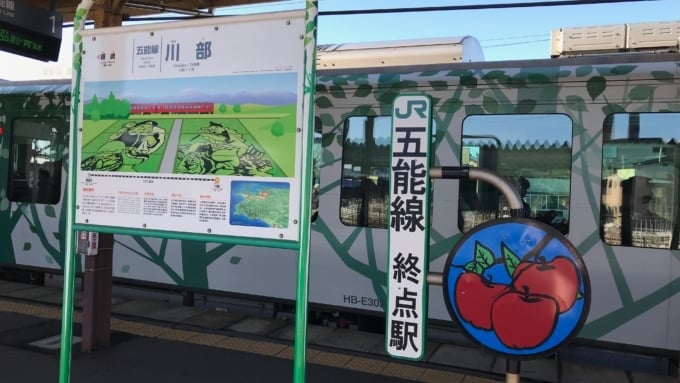
Kawabe Station, known for its "Rice Paddy Art," is the final station of the JR Gono Line. There is a sign on the platform marking it as the "JR Gono Line Terminus Station," and many passengers step out onto the platform to take photos of the sign, the train, and the station itself.
Name: Inakadate Village Rice Paddy Art
Address: Inakadate Village, Minamitsugaru District, Aomori Prefecture
Official Website: http://www.inakadate-tanboart.net/
③ Goshogawara Station
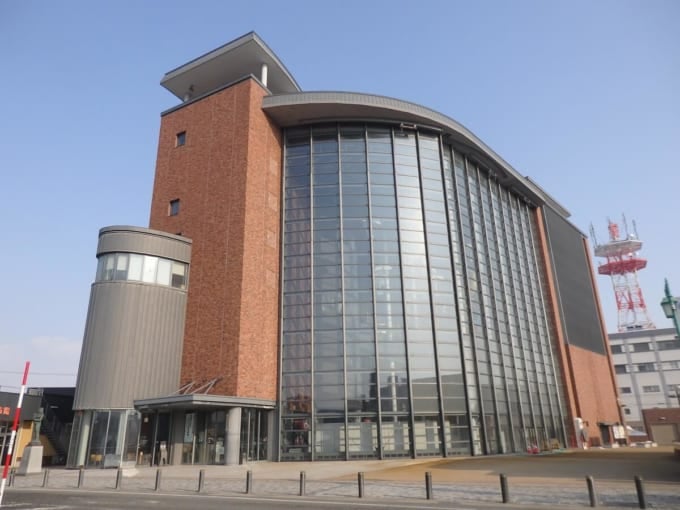
Goshogawara is famous for Osamu Dazai and the Goshogawara Tachineputa Festival!
The Tachineputa Museum, where visitors can see three towering Tachineputa festival floats, is just a 5-minute walk from Goshogawara Station. Another recommended activity is taking the Tsugaru Railway's "Stove Train" to Kanagi Station, where you can visit Shayokan (Dazai Osamu Memorial Hall) and trace the footsteps of the renowned author.
④ Kizukuri Station
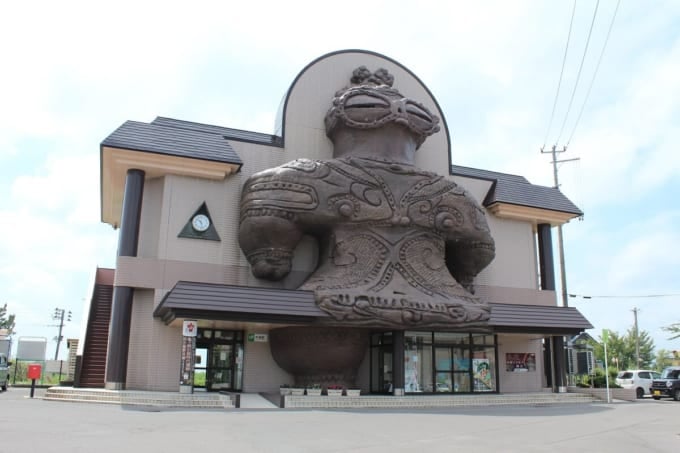
Kizukuri Station is known for its striking exterior—it’s not just a station; it is the giant clay figurine "Shako-chan"! In this town, you’ll have fun spotting Shako-chan-themed designs on manhole covers, public baths, souvenirs, and bento boxes.
Name: Kizukuri Station
Address: 10 Kizukurafusematsu, Tsugaru City, Aomori Prefecture
Official Website URL: https://www.jreast.co.jp/akita/gonosen/menu/15.html
⑤ Ajigasawa Station
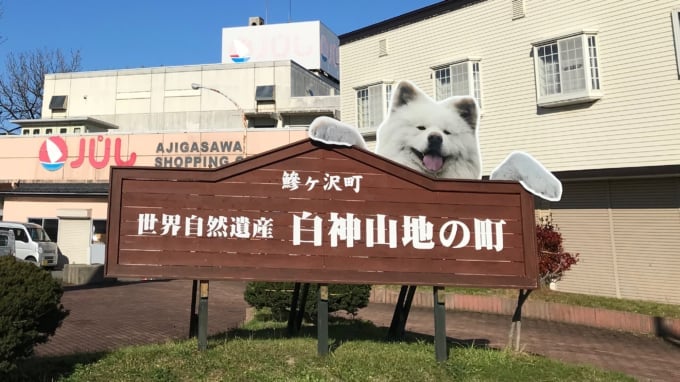
Upon arriving at Ajigasawa Station, you’ll be greeted by an information board about the "Town of Shirakami-Sanchi" and a statue of Wasao, the Akita dog who served as the station’s honorary tourism manager. While visiting Ajigasawa, why not experience thalassotherapy (marine therapy) by soaking in a fossil seawater hot spring?
Ajigasawa Onsen’s water comes from seawater trapped underground for approximately 300,000 years. The slightly dark-colored, highly saline water is known for its excellent heat-retention and moisturizing effects.
◆ Hotel Grandmer Sankaiso
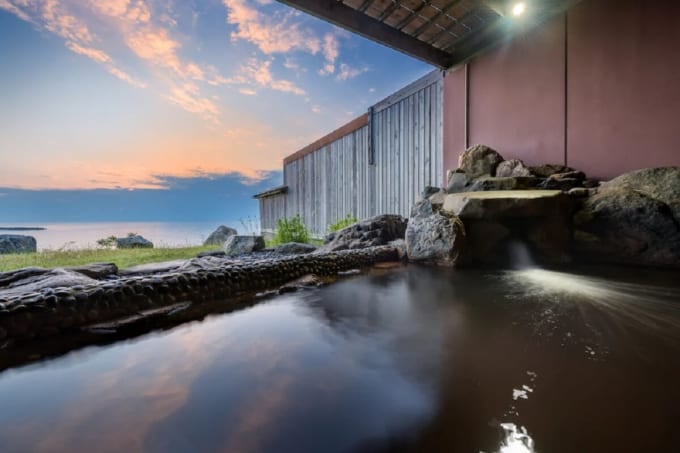
For an open-air bath in a fossil seawater hot spring, Hotel Grandmer Sankaiso in Ajigasawa Onsen is highly recommended. A free shuttle bus is available from Ajigasawa Station for added convenience.
Name: Ajigasawa Tourism "Ajiiku?"
Official Website URL: http://www.ajiiku.jp/
⑥ Senjojiki Station
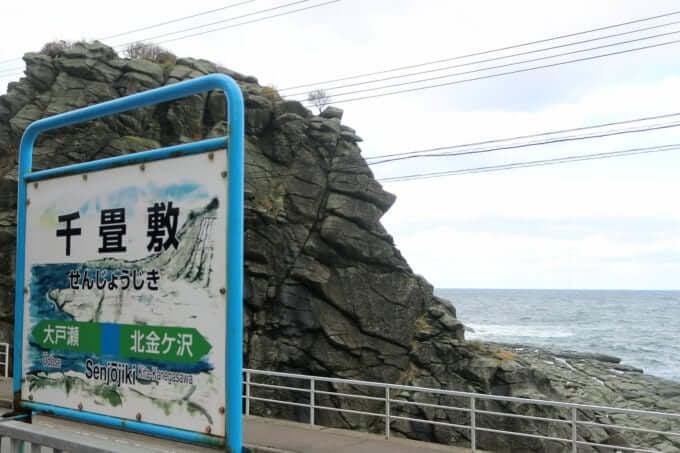
Cross the road from Senjojiki Station and head down from the parking lot to reach the rocky shore—this is Senjojiki Coast, one of the most famous sightseeing spots along the Gono Line. If your train makes the approximately 15-minute sightseeing stop, take the opportunity to walk along the sea!
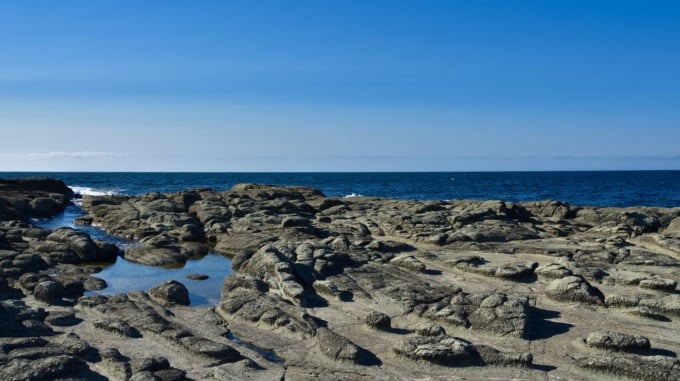
The expansive rock formation is said to have been the site of a grand banquet hosted by the Tsugaru clan, where "a thousand tatami mats" (senjōjiki) were laid out. Since the Gono Line does not have frequent services, the sightseeing stop made by the Resort Shirakami train is especially convenient.
In the parking area by the road, you’ll also find notable landmarks such as the Oose Kannon Statue, a literary monument dedicated to Osamu Dazai’s novel Tsugaru, and a monument honoring writer Omachi Keigetsu.
Name: Senjojiki Coast
Address: Sakakibara, Kitakanegasawa, Fukaura Town, Nishitsugaru District, Aomori Prefecture
Official Website URL: https://aomori-tourism.com/spot/detail_72.html
⑦ WESPA Tsubakiyama Station
◆ Koganezaki Furofushi Onsen
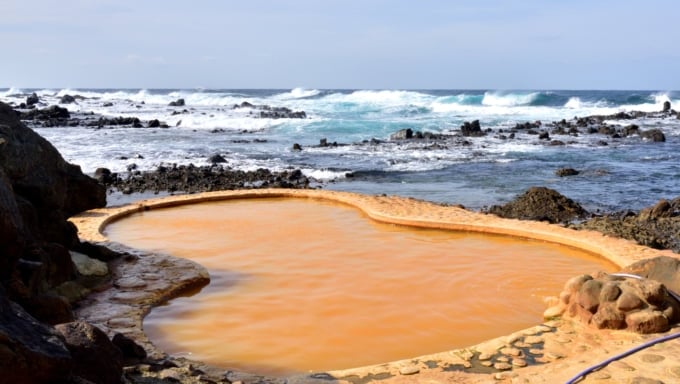
WESPA Tsubakiyama Station is the nearest station to the famous Koganezaki Furofushi Onsen. The onsen provides a free shuttle bus that aligns with the Resort Shirakami’s arrival and departure times. If the weather is nice, don’t miss the open-air bath with a stunning ocean view, where you can feel as if you’re soaking right in the Sea of Japan.
Name: Koganezaki Furofushi Onsen
Address: 15 Shimokiyotaki, Takanosu, Fukaura Town, Nishitsugaru District, Aomori Prefecture
◆ Bussankan Korobokkuru
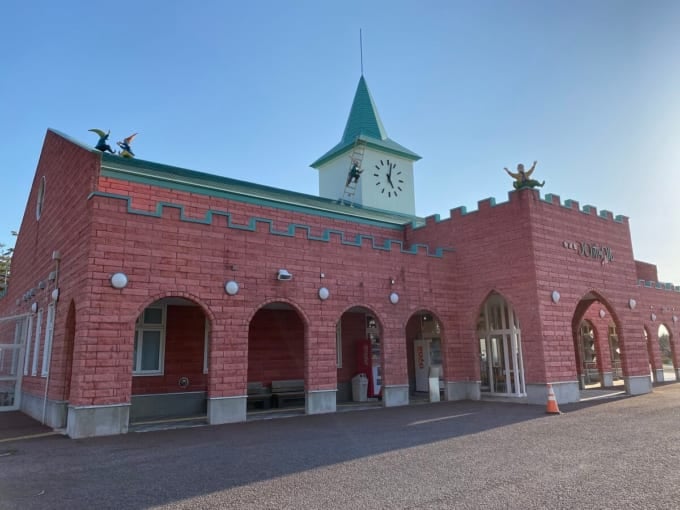
The resort facility WESPA Tsubakiyama, located in front of WESPA Tsubakiyama Station, unfortunately closed in October 2020. However, in July 2021, Bussankan Korobokkuru was newly reopened, so let me introduce it.
Bussankan Korobokkuru not only sells souvenirs and local products but also serves as the station building for JR Gono Line's WESPA Tsubakiyama Station, as well as a tourist and accommodation information center for Fukaura Town. Feel free to stop by while waiting for the Resort Shirakami train or during your visit.
Name: Bussankan Korobokkuru
Address: 226-1 Nabebishi, Takanosu, Fukaura Town, Nishitsugaru District, Aomori Prefecture
Official Website URL: http://fukadoko.jp/spot-3-3/index.html
⑧ Juniko Station
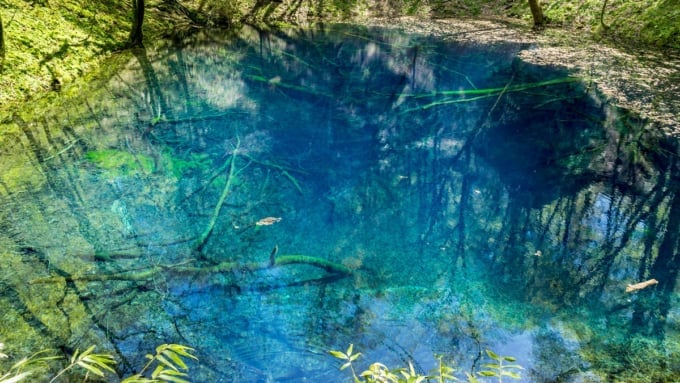
The main sightseeing attractions near Juniko Station are Juniko (Twelve Lakes) and Japan Canyon. Among them, the most famous spot is Aoike (Blue Pond), which has an otherworldly deep blue color that looks like ink. It’s so well-known that one of the Resort Shirakami train variants was named after it. Take a relaxing walk through the beech forest in the Juniko area and enjoy a natural forest bath while taking in the untouched beauty of Shirakami-Sanchi.
To get there, take a bus from Juniko Station—it's about a 15-minute ride. Since bus services are limited, be sure to check the return schedule in advance. If you prefer a guided experience, consider joining a sightseeing tour that includes both the bus ride and a walking guide.
Name: Juniko (Twelve Lakes)
Address: Matsukami National Forest, Fukaura Town, Nishitsugaru District, Aomori Prefecture
⑨ Higashi-Noshiro Station

Higashi-Noshiro Station is the starting point of the Gono Line and features some unique photography spots on its platform. Look out for the "Welcome to Noshiro, the City of Basketball" sign, complete with a basketball hoop! Also, don’t miss the Kumagera Waiting Room, modeled after the Kumagera train variant of the Resort Shirakami. Inside, you’ll even find an authentic train driver’s control panel that was relocated here.
Name: Higashi-Noshiro "Welcome Noshiro"
Official Website URL: https://welcomenoshiro.com/
◎ Set Out on a Journey with the Resort Shirakami!
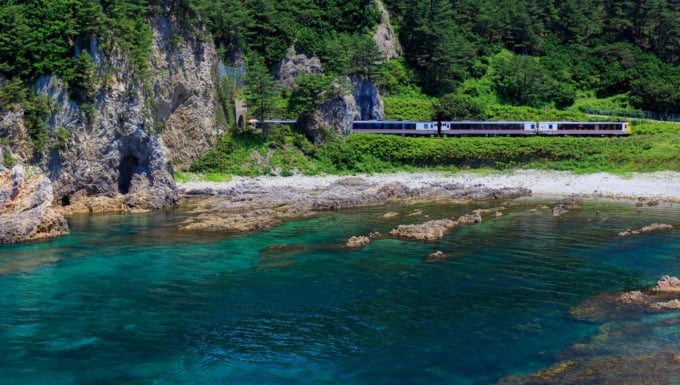
The Resort Shirakami train attracts travelers from all over Japan, so the highly sought-after window-side A seats tend to sell out quickly. Be sure to reserve your seats as early as possible!
With breathtaking views of both the sea and mountains, the Resort Shirakami offers a relaxed and scenic journey. If you haven’t experienced it yet, why not take a ride?
Information as of November 2023.
RELATED ARTICLES
REGIONS
CATEGORIES
FEATURED ON
-
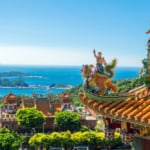
The 19 Best Things to Do in Taiwan in 2022
-

The Best Brunch and Breakfast Spots in London
-
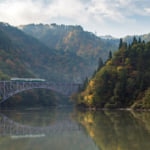
Scenic Train Journeys You Can Take Around Japan
-

The Top 5 Places to Eat Mango Shaved Ice in Taipei
-

The Spice Island of the Caribbean! 5 Must-Visit Tourist Attractions in Grenada
-
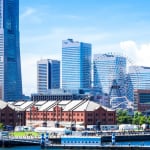
What is Yokohama Sea Bass?|Introducing Fares and Sightseeing Routes!
-
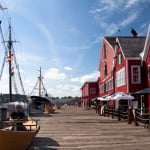
The colorful houses are so cute! Old Town Lunenburg, a UNESCO World Heritage Site in Canada
-

A Tiny Island in the Caribbean! Discover the Best Souvenirs to Bring Home from Saint Lucia!
-

Traveling from Los Angeles to San Francisco! A Guide to Transportation Options
MOST POPULAR ON
-
 1
1Doha: Must-see Attractions in the Capital of Qatar
-
 2
2Toronto: 10 Things to do in this Picturesque Canadian City
-
 3
3Amarillo: A City Famous for It’s Amazing Canyons, Great History and Music
-
 4
4South Korea: Dazzling Scenery, Rich Culture and Fascinating History
-
 5
5Kuwait: A Country in Middle East Asia Famous for Hot Sand Dunes and Stunning Cityscape

